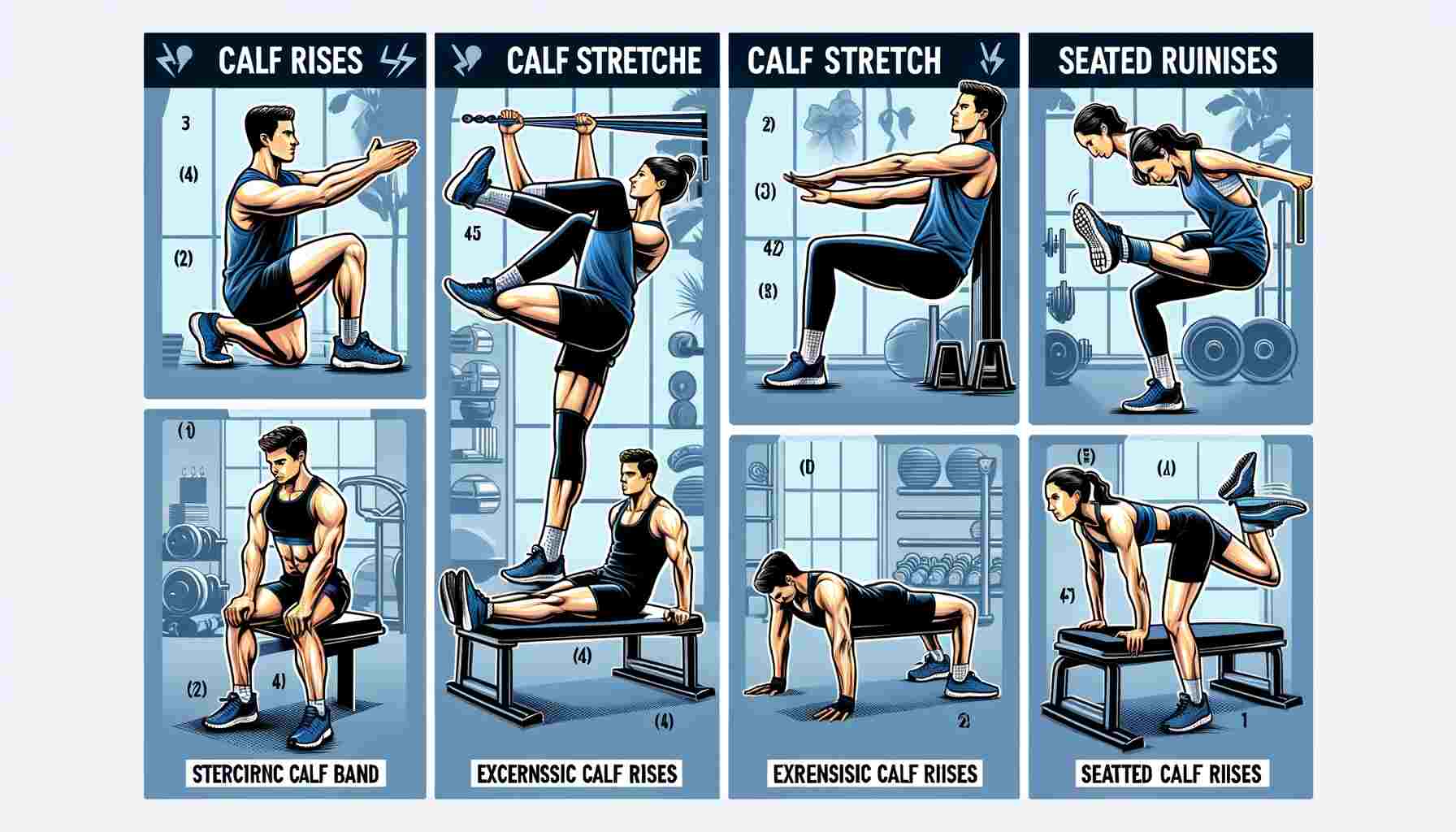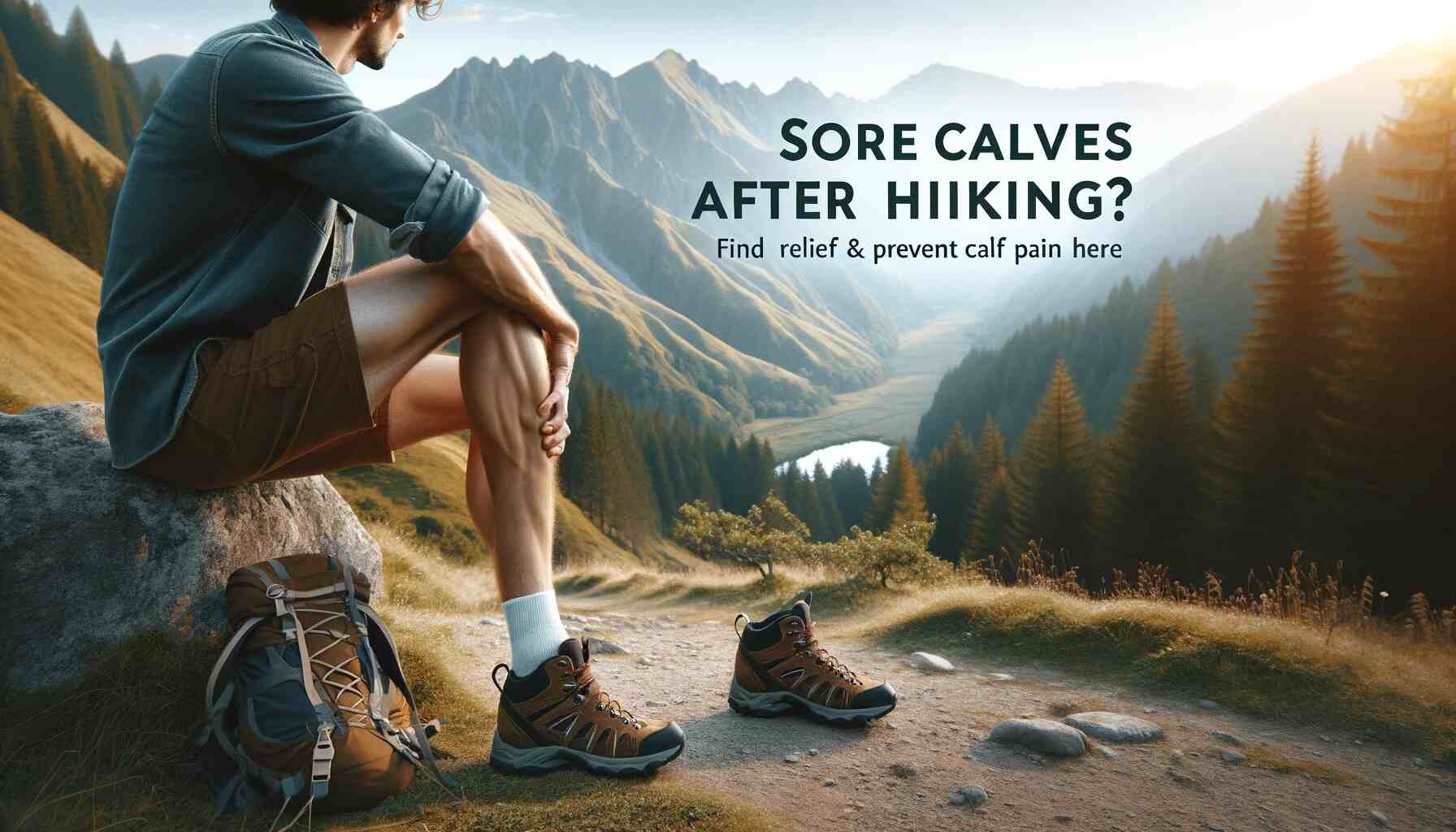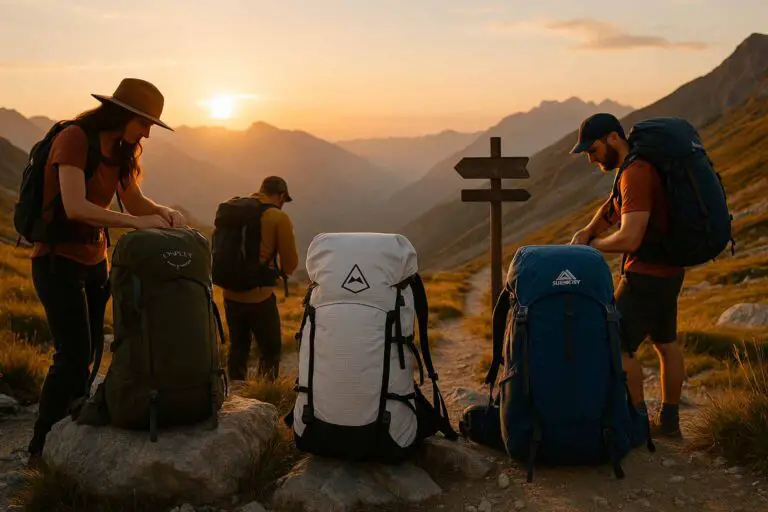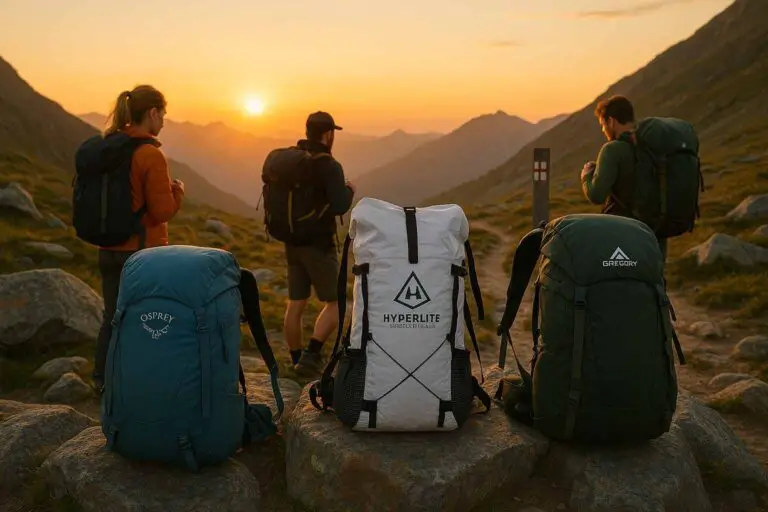Newbie hikers often experience post-hike muscle soreness, as their muscles adapt to this unfamiliar activity. Even seasoned hikers can feel sore calves during or after hiking when tackling challenging or longer trails for the first time.
Throughout this guide, we will explore the reasons behind calf pain during or after hiking, offer effective relief strategies, and provide essential tips for preventing calf pain in your future hikes.
Understanding Calf Pain During Hiking
Before we delve into solutions, let’s understand why calf pain is a common occurrence during and after hiking. Knowledge about the causes of this discomfort will help us address it more effectively.
1. Muscle Fatigue
One of the primary reasons for sore calves after hiking is muscle fatigue. When you hike, your calf muscles are constantly engaged, especially when you’re climbing uphill or navigating uneven terrain. Over time, this sustained effort can lead to muscle fatigue and discomfort.
2. Dehydration
Dehydration can exacerbate calf pain during hiking. Inadequate hydration can cause muscle cramps, making your calf muscles more prone to soreness. Make sure to drink plenty of water before, during, and after your hike to stay properly hydrated.
3. Inadequate Warm-Up
Skipping a proper warm-up before hitting the hiking trail is a common mistake. Cold muscles are more susceptible to injury and soreness. A brief warm-up routine that includes calf stretches can go a long way in preventing discomfort.
4. Overexertion
Pushing your limits too hard can lead to overexertion, causing your calf muscles to become sore. Always hike within your fitness level, gradually increasing the intensity and duration as you gain more experience and stamina.
5. Improper Footwear
Wearing improper footwear, such as shoes that don’t provide proper arch support, can put excess strain on your calf muscles. Investing in quality hiking boots or shoes is essential for a comfortable hiking experience.
Relief for Sore Calves After Hiking
Now that we have a better understanding of why calf pain can occur during and after hiking, let’s explore effective ways to find relief when you’re already experiencing discomfort.
1. Rest and Recovery
The first step in alleviating sore calves after hiking is to give your muscles time to rest and recover. Avoid any strenuous activities that could further strain your calf muscles. Rest is crucial for the healing process.
2. Gentle Stretching
Perform gentle calf stretches to relieve tightness and improve blood circulation. Here are a few effective calf stretches:
- Standing Calf Stretch: Stand with one foot forward and one foot back, keeping your back leg straight. Lean forward slightly until you feel a stretch in your calf. Hold for 15-30 seconds and switch legs.
- Seated Calf Stretch: Sit on the ground with your legs extended. Use a towel or strap to gently pull your toes towards you, feeling the stretch in your calf muscles.
- Wall Calf Stretch: Stand facing a wall with your hands on the wall at shoulder height. Step one foot back and press your heel into the ground, keeping your back leg straight. Hold for 15-30 seconds and switch legs.
3. Massage
Massage can provide immediate relief to sore calf muscles. You can use your hands or a foam roller to massage the affected area. Apply gentle pressure and gradually increase it as your muscles relax.
4. Ice and Heat Therapy
Applying ice and heat alternatively can help reduce inflammation and ease soreness. Start with ice for the first 48 hours to reduce swelling and follow up with heat to relax and soothe the muscles.
5. Over-the-Counter Pain Relief
If the pain is severe, you can consider over-the-counter pain relief medications like ibuprofen. However, always consult with a healthcare professional before taking any medication.

Calf-Strengthening Exercises for Calf Pain
Strengthening your calf muscles is a key aspect of preventing calf pain during and after hiking. Strong calves provide better support and endurance, reducing the risk of fatigue and discomfort. Here are some effective calf-strengthening exercises that you can incorporate into your fitness routine:
1. Calf Raises
Calf raises are a classic exercise for building calf strength. You can perform them with or without weights for added resistance.
Instructions:
- Stand upright with your feet hip-width apart.
- If using weights, hold dumbbells in your hands by your sides. If not, place your hands on a stable surface for balance, such as a wall or railing.
- Slowly rise up onto the balls of your feet, lifting your heels as high as possible.
- Hold the raised position for a moment to feel the contraction in your calf muscles.
- Lower your heels back down to the starting position, keeping the movement controlled.
- Repeat for 3 sets of 12-15 repetitions.
2. Calf Stretch with Resistance Band
This exercise combines stretching with resistance to improve calf strength and flexibility.
Instructions:
- Sit on the floor with your legs extended straight.
- Loop a resistance band around the balls of your feet, holding the ends of the band in your hands.
- Gently flex your feet, pulling the band towards you to create tension.
- Point your toes away from you, stretching your calf muscles while maintaining tension on the band.
- Slowly return to the starting position.
- Repeat for 3 sets of 12-15 repetitions.
3. Eccentric Calf Raises
Eccentric calf raises focus on the lowering phase of the exercise, which helps build strength and stability in the calf muscles.
Instructions:
- Stand on an elevated surface, such as a step or curb, with your toes on the edge and your heels hanging off.
- Rise up onto your tiptoes using both feet.
- Shift your weight onto one foot and slowly lower the other heel below the level of the step, taking about 3-5 seconds to lower it.
- Use your toes on the supporting foot to lift your heel back up to the starting position.
- Repeat the exercise on the other leg.
- Perform 3 sets of 10-12 repetitions per leg.
4. Seated Calf Raises
Seated calf raises target the soleus muscle, which lies underneath the gastrocnemius, for a well-rounded calf workout.
Instructions:
- Sit on a chair or bench with your feet flat on the floor and knees bent at a 90-degree angle.
- Place a weight or dumbbell on your thighs, just above your knees.
- Lift your heels as high as possible, squeezing your calf muscles.
- Lower your heels back down to the floor.
- Repeat for 3 sets of 12-15 repetitions.
Incorporating these calf-strengthening exercises into your regular fitness routine can significantly improve the strength and endurance of your calf muscles, reducing the likelihood of experiencing soreness during and after hiking.
Remember to start with a weight or resistance level that is comfortable for you and gradually increase it as you become stronger. Always maintain proper form to prevent injuries.
Preventing Calf Pain During Hiking
Prevention is often the best strategy when it comes to calf pain during hiking. Here are some proactive steps you can take to minimize the chances of experiencing sore calves on your next adventure.
1. Proper Footwear
Invest in high-quality hiking boots or shoes that provide good arch support and fit comfortably. Ill-fitting footwear can cause unnecessary strain on your calf muscles.
2. Warm-Up
Prior to starting your hike, perform a thorough warm-up routine that includes calf stretches. This will prepare your muscles for the physical demands of hiking and reduce the risk of injury.
3. Gradual Progression
Don’t push yourself too hard, especially if you’re new to hiking or exploring more challenging terrain. Gradually increase the intensity and duration of your hikes as your fitness level improves.
4. Stay Hydrated
Proper hydration is crucial for preventing muscle cramps and soreness. Drink water regularly throughout your hike to stay adequately hydrated.
5. Use Trekking Poles
Trekking poles can help distribute the workload evenly between your upper body and lower body, reducing the strain on your calf muscles. They also provide stability on uneven terrain.
6. Calf Strengthening Exercises
Incorporate calf-strengthening exercises into your regular fitness routine. Stronger calf muscles are less likely to become fatigued and sore during a hike.
Types of Hiking Footwear to Prevent Calf Pain During Hiking
1. Hiking Shoes
- Ideal For: Well-maintained trails, day hikes, warm seasons.
- Features: Lightweight, flexible, good ventilation.
- Recommendetion: Merrell Moab 2, Salomon X Ultra 3.
2. Hiking Boots
- Ideal For: Rugged terrain, rocky trails, carrying heavier loads, ankle support.
- Features: Mid to high-cut, sturdy construction, ankle support.
- Recommendation: Vasque Breeze III, Columbia Newton Ridge Plus II.
3. Trail Runners
- Ideal For: Lightweight hiking, fast-paced hikes, well-groomed trails.
- Features: Lightweight, comfortable, breathable.
- Recommendation: Altra Lone Peak, Brooks Cascadia.
4. Winter Boots
- Ideal For: Cold and wet conditions, snowy or icy terrain.
- Features: Insulated, waterproof, higher cut.
- Recommendation: Columbia Bugaboot, The North Face Chilkat.
5. Backpacking Boots
- Ideal For: Extended backpacking trips, carrying heavy loads, rugged terrain.
- Features: Sturdy construction, ankle support, durable materials.
- Recommendation: Scarpa Zodiac Plus, Lowa Renegade GTX.
Remember that the best hiking footwear for you depends on your personal preferences, the specific hiking conditions you’ll encounter, and the duration of your hikes. Prioritize fit, comfort, and terrain-appropriate features when making your selection. Don’t hesitate to consult with a knowledgeable retailer or outdoor gear specialist for personalized recommendations based on your hiking goals and local conditions.
Common Mistakes to Avoid When Hiking
1. Overpacking
Mistake: Carrying a backpack that is too heavy or overpacked with unnecessary items can put excessive strain on your calf muscles and lead to fatigue and soreness.
Solution: Pack only the essentials and distribute weight evenly in your backpack. Invest in lightweight gear to reduce the overall load.
2. Incorrect Footwear
Mistake: Wearing ill-fitting or inadequate footwear can lead to discomfort and calf pain. Shoes that lack proper arch support can put extra strain on your calf muscles.
Solution: Invest in high-quality hiking boots or shoes that provide good arch support and are suitable for the terrain you’ll be hiking on. Ensure a proper fit to prevent blisters and discomfort.
3. Poor Hiking Posture
Mistake: Maintaining improper posture while hiking, such as leaning forward excessively or not using trekking poles, can lead to muscle imbalances and calf pain.
Solution: Maintain an upright posture, keeping your back straight and your core engaged. Use trekking poles to help distribute the workload and provide stability, especially on uneven terrain.
4. Ignoring Altitude Changes
Mistake: Ascending to higher altitudes without proper acclimatization can lead to calf pain and other altitude-related issues.
Solution: When hiking at higher altitudes, take your time to acclimatize properly. Gradually ascend to allow your body to adjust to the reduced oxygen levels.
5. Overexertion
Mistake: Pushing yourself too hard, especially if you’re new to hiking or tackling challenging trails, can lead to overexertion, calf fatigue, and soreness.
Solution: Know your fitness level and choose hiking trails that match your abilities. Gradually increase the intensity and duration of your hikes as your stamina improves.
6. Lack of Warm-Up
Mistake: Skipping a proper warm-up before hiking can leave your calf muscles cold and susceptible to injury.
Solution: Always start your hike with a gentle warm-up routine that includes calf stretches. This helps prepare your muscles for the demands of the trail.
7. Not Taking Breaks
Mistake: Not taking regular breaks during a long hike can lead to muscle fatigue, including calf soreness.
Solution: Plan for regular breaks to rest, stretch, and rehydrate. These breaks allow your calf muscles to recover and reduce the risk of pain.
8. Inadequate Hydration
Mistake: Failing to stay adequately hydrated during a hike can lead to muscle cramps, including calf cramps.
Solution: Drink water regularly throughout your hike, even if you don’t feel thirsty. Consider carrying a hydration bladder or water bottle for easy access.
9. Ignoring Signs of Pain
Mistake: Ignoring discomfort or pain during a hike and pushing through it can lead to more severe calf issues.
Solution: Listen to your body. If you experience persistent calf pain or discomfort, it’s okay to cut your hike short or seek medical attention if necessary.
10. Neglecting Stretching
Mistake: Failing to stretch your calf muscles before and during your hike can increase the risk of soreness and cramps.
Solution: Incorporate calf stretches into your warm-up routine and take short stretching breaks during your hike to keep your calf muscles flexible.
When to Seek Medical Attention
In most cases, sore calves after hiking are a result of overexertion and can be managed with the methods mentioned above. However, there are instances where you should seek medical attention:
1. Severe Pain
If the pain is severe and doesn’t improve with rest and home remedies, consult a healthcare professional.
2. Swelling and Redness
If your calf is swollen, red, or warm to the touch, it could indicate a more serious issue like deep vein thrombosis (DVT) or cellulitis. Seek immediate medical attention.
3. Numbness or Tingling
If you experience numbness or tingling in your calf, it could be a sign of nerve compression or injury, and you should consult a doctor.
4. Persistent Symptoms
If your calf pain persists for an extended period, despite trying various remedies, it’s essential to get a professional evaluation to rule out underlying conditions.
Additional Tips for a Comfortable Hike
In addition to preventing and relieving calf pain, here are some extra tips to ensure a comfortable and enjoyable hiking experience:
1. Plan Your Hike
Research your hiking trail beforehand. Know its difficulty level, terrain, and any potential challenges. This will help you prepare appropriately.
2. Wear Moisture-Wicking Clothing
Choose moisture-wicking clothing to keep sweat away from your body, reducing the risk of chafing and discomfort.
3. Proper Nutrition
Fuel your body with nutritious snacks and meals before and during your hike. Proper nutrition can boost your energy levels and overall endurance.
4. Know When to Stop
Listen to your body. If you start feeling extreme discomfort or pain during a hike, it’s okay to cut it short. Pushing through pain can lead to injuries.
5. Take Breaks
Regular breaks during your hike give your calf muscles a chance to recover. Use these breaks to stretch and rehydrate.
Conclusion
Sore calves after hiking are a common issue that can result from muscle fatigue, improper footwear, or inadequate preparation. To find relief, consider rest, gentle stretching, and over-the-counter pain relievers.
To prevent calf pain, invest in proper hiking footwear, incorporate calf-strengthening exercises, maintain good hydration and nutrition, and choose hiking trails that match your skill level. Avoid common mistakes like overpacking and incorrect hiking posture. Ultimately, proper preparation, gear, and self-care can help you enjoy hiking without calf pain.
Join the debate: Is Hiking Better Than Running?








